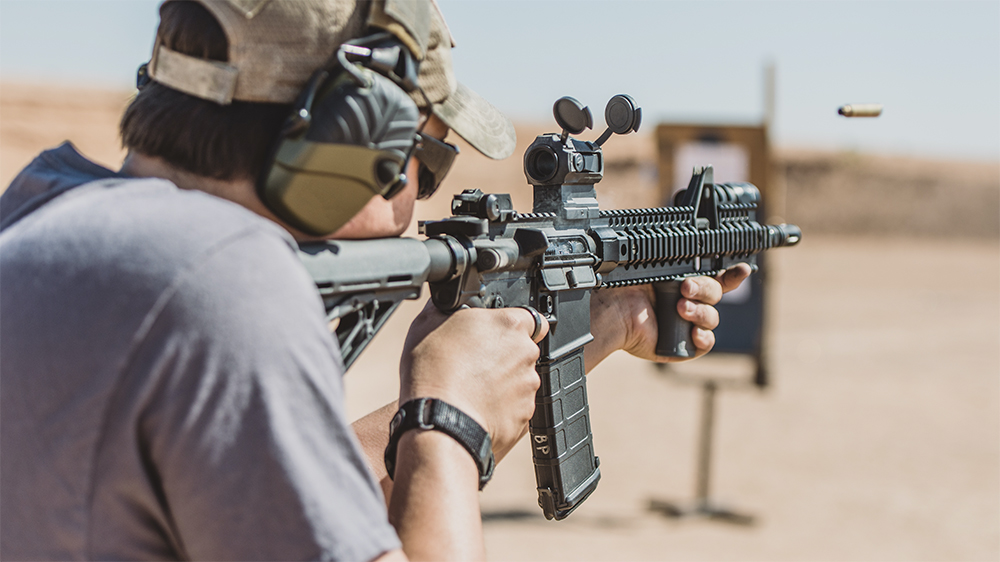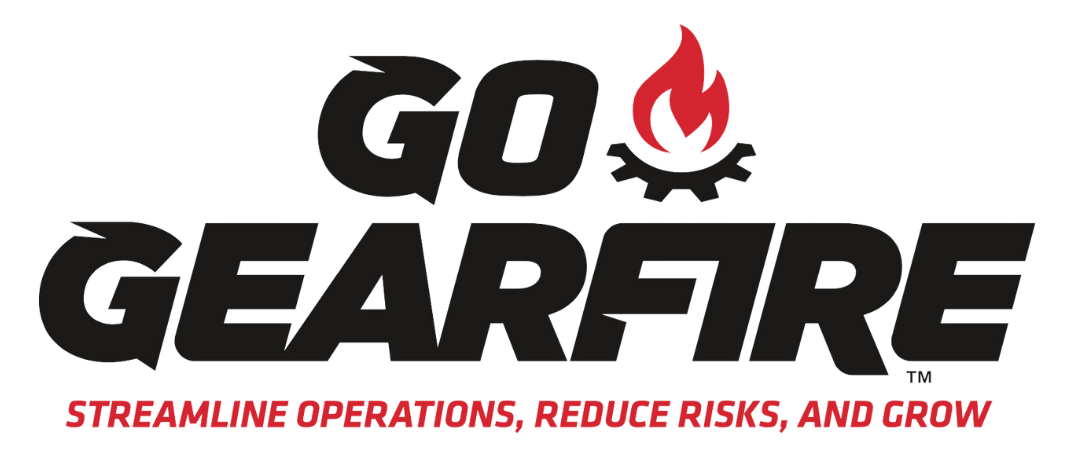
I said it before, and I’ll repeat it again – – – there’s A LOT of information in ATF 2021R-05, New Proposed Rulemaking. As we start to take Bite Two – Definition of Frames & Receivers – it’s important to keep in mind this is a PROPOSED Rulemaking. Yes – a Proposed Rulemaking does most frequently lead to changes in rulings – – – but the final document can be very different than the initial filing. Take every bit of talk and impact discussions around this PROPOSED Rulemaking – including this blog series – with a grain of salt. We’re all talking about what MIGHT BE – not what IS – all bets are off until the Final Rule is published in the Federal Register – which will take several months to accomplish, at best.

Bite Two of the Elephant: Definition of Frames & Receivers
With this Proposed Rule, the current definition of Frame orReceiver would change to:
Frame or Receiver. A part of a firearm that, when the complete weapon is assembled, is visible from the exterior and provides housing or a structure designed to hold or integrate one or more fire control components, even if pins or other attachments are required to connect those components to the housing or structure. Any such part identified with a serial number shall be presumed, absent an official determination by the Director to other reliable evidence to the contrary, to be a frame or receiver. For purposes of this definition, the term “fire control component” means a component necessary for the firearm to initiate, compete, or continue the firing sequence, including any of the following: hammer, bolt, bolt carrier, breechlock, cylinder, trigger mechanism, firing pin, striker, or slide rails.
It also creates new definitions for:
Firearm muffler or silencer frame or receiver. The term “frame or receiver” shall mean, in the case of a firearm muffler or firearm silencer, a part of the firearm that, when the complete device is assembled, is visible from the exterior and provides housing or a structure, such as an outer tube or modular piece, designed to hold or integrate one or more essential internal components of the device, including any of the following: baffles, baffling material, or expansion chamber.
Split or modular frame or receiver.
(1) In the case of a firearm with more than one part that provides housing or a structure designed to hold or integrate one or more fire control or essential internal components (e.g., a split frame with upper assembly and lower assembly as in many semi automatic rifles, upper slide assembly and lower grip module as in many semi automatic handguns, or multiple silencer modular pieces), the Director may determine whether a specific part or parts of a weapon is the frame or receiver, which may include an internal frame or chassis at least partially exposed to the exterior to allow identification. In making this determination, the Director will consider the following factors, with no single factor being controlling:
a) Which component the manufacturer intended to be the frame or receiver;
b) Which component the firearms industry commonly considers to be the frame or receiver with respect to the same or similar firearms;
c) How the component fits within the overall design of the firearm when assembled;
d) The design and function of the fire control components to be housed or integrated;
e) Whether the component may permanently, conspicuously, and legibly be identified with a serial number and other markings in a manner not susceptible of being readily obliterated, altered, or removed;
f) Whether classifying the particular component is consistent with the legislative intent of the Act and this part; and
g) Whether classifying the component as the frame or receiver is consistent with ATF’s prior classifications.
(2) Frames or receivers of different weapons that are combined to create a similar weapon each retain their respective classifications as frames or receivers provided they retain their original design and configuration.
(3) The Director has previously determined that a specific part is the frame or receiver with respect to certain weapons with split or modular frames or receivers. The following is a nonexclusive list of such weapons and the specific part identified as the frame or receiver as they existed on [date of publication of the final rule]:(i) Colt 1911-type, Beretta/Browning/FN Herstal/Heckler & Koch/Ruger/Sig Sauer/Smith & Wesson/Taurus hammer fired semiautomatic pistols: The lower portion of the pistol, or grip, that provides housing for the trigger mechanism and hammer, and a structure designed to integrate the slide rails.
Great – lots of regulatory-ease…what does it mean to me?
Again, the amount and type of impact to your FFL(s) from these changes will depend largely on exactly what and how you are conducting business…but ALL FFL(s) will feel some impact from these proposed changes.
Up until this Proposed Rulemaking, a firearm frame or receiver had one, single point of truth – – – the serial number. And any given firearm – assembled or not – had only one frame or receiver; everything else was gun parts or accessories. For the most part, this works well, assuming you’re talking about older style firearms. You know – the firearms that were available in 1934 and 1968 when the National Firearms Act (NFA) and Gun Control Act (GCA)were enacted. But, just like John Dillinger and FDR (common names in the headlines during 1934) are now found largely in history books, ATF argues the current definition of frames and receivers are antiquated, too.
…And the court system has seemed to agree. There have been a handful of cases where the definition of frame or receiver – which the courts deemed to apply to neither an AR style upper receiver OR lower receiver – ended with the case and/or their convictions being vacated or dismissed. Essentially, the courts determined a traditional AR had no frame or receiver – and thus no part was subject to NFA or GCA. WHAT?!??! Yes – the number one style selling firearm in the US has been determined– in more than one court case – to not be subject to any currently enacted regulations.
You can see the issue here. If you want to know all the details, simply open this Proposed Rulemaking – – – most are cited and documented within the Proposed Rulemaking.
Again, without going down the rabbit hole of legal arguments, right or wrong, etc., we’ll focus on this Proposed Rulemaking and what it could mean to your FFL business.
With the New Proposed Rulemaking, a fully assembled firearm may have one or more frames or receivers. No longer will there be a one to one relationship for serial number to firearm count. Instead, a new-fangled AR type firearm would likely be determined to have two receivers – an upper and a lower – both of which would be subject to all requirements for manufacturing and transacting firearms. Both the upper and lower will have to be marked in accordance with all marking standards, and both pieces would need to be transacted as a firearm – and transferred as such.
Therefore, in this scenario – if you’re transferring some sort of new-fangled AR like fully assembled firearm over the counter to a non-licensee, when you’re completing ATF Form 4473, there could be two manufacturers, two models, one or more importers, two calibers and two serial numbers for a single firearm transferred. The same information would have to be documented in your acquisition and disposition record, as well.
And, if you were to disassemble this imaginary, new-fangled AR style firearm, you would then self-dispose the item as a fully assembled firearm, and reacquire two, separate frames or receivers into your bound book.
What I see as the biggest hurdles around this piece of the Proposed Rulemaking is changing the long-standing idea that it’s one serial number to firearm and updating every electronic system that deals in firearms. Although I know, in fact, you can teach an old dog new tricks and thus I have no doubt – with some diligence and effort – we can learn to look for multiple markings, in the digital world, the data setup – or data schema – is the backbone of every software system out there. And, how the data may and may NOT interact is the skeleton of all the programming. To switch from a one-to-one relationship to a one-to-many relationship will require complete rebuilds for many, many systems. This also means you’ll likely need to re-learn any established software systems you may already have in place once it’s updated to meet this new standard.
The proposed new definition for Firearm muffler or silencer frame or receiver and the other associated clarifications around muffler or silencer markings might make you smile if you are in the business of manufacturing or repairing suppressors. In a very small nutshell, ATF is proposing clarifications around what exactly does and does NOT need to be serialized for suppressors and what is and what is NOT considered to be a frame or receiver. Having these detailed definitions will, in theory, align all regulators around suppressors and suppressor pieces – something which many folks believe is long overdue.
ATF is also proposing to include an extensive list of firearms frames and receivers and silencer frames and receivers and/or complete mufflers or silencers already on the market that will NOT be subject to reclassification / new marking with this new proposed rulemaking. This means, even after this potentially new rule goes into effect, essentially a new firearm will have to be brought to market before these multiple manufactures, serial numbers, etc. will actually start to show up in your FFL business. On the downside, if you are in the manufacturing business, it means you’ll likely need to seek clarification on your manufacturing and marking process to determine exactly if and when each component becomes a “firearm”.

All FFL’s:
1) Work with Vendors/Manufactures. As we mentioned, virtually all items on the market will NOT be reclassified – – – but new firearm products could have more than one frame or receiver with this Proposed Rulemaking. I highly recommend you touch base with your vendors, distributors and any manufacturers from which you buy directly to workout a process to be notified of any split frame or receiver firearms. Do not assume they will let you know when this for instance arises – be proactive and outline how/when this information will be conveyed to you for items you are transacting with the associated vendor / distributor / manufacturer.
2) Determine What Data Points Will Appear in the Bound Book and Add Them to Your Master Data Set. I suggest taking a look at every split frame or receiver firearm that you will stock and determine what data points are available, which data points will be documented in your bound book and add these to your Master Data set. In other words, decide ahead of time how each split frame or receiver firearm should be logged into your bound book – don’t decide on the fly each time – give your team members a template to work off for each firearm, and train them to your expectations.
3) Review your bound books. If you’ve been running a home-grown /home-programmed bound book, it is likely time to find a commercial vendor. And, if you already have an electronic bound book provider, now is the time to start asking how your provider will accommodate these changes – if at all. Honestly, I think there could be more than one provider leave the firearms technology space rather than undertake a complete system redesign. Don’t be caught off guard; do your research and find out what the plans are for your software system. You do not want to learn last minute that your provider will be leaving the firearms space – and leaving you without support or a compliant system. If you have integrated systems, start early! The marrying of data points is no mean feat – especially with more data points; get ahead of this one by engaging your provider(s) as soon as there is a Final Rulemaking. If you are using paper bound books, you will likely need to find a new format – likely with more real estate to input multiple manufacturers, models, etc. ATF has an established processes for moving firearms from one paper bound book to the other, give their website www.atf.gov, a quick search and you will find all the pertinent details.
4) Learn and Train on New Processes. Whether you are using an electronic bound book / 4473, or a paper bound book / 4473, you will need to outline the “new” process for transacting split frame or receiver firearms, how and where to input what information, teach folks what are frame(s) and receiver(s) and what’s just gun parts. It’s a total new training, and likely, total new software training. Take the time to write it down, create training aids, etc. Work with any software vendors to arrange in-depth training so your team is not caught off guard with completely new workflows. Importantly, know when your software provider will be implementing the changes, so you don’t walk into your business one day with a completely new system you have no idea how to use – – – nothing amuses customers more than waiting for someone to figure out how to use a register/computer system while they’re waiting!
5) Plan. Train. Practice. Replan. Execute. Many times, I have seen business owners assume changes to their business operations due to regulatory changes are nothing short of obvious, so there’s no need for training or planning. Please do not make this mistake! Take some time to walk through WHAT the changes are with employees and how they, specifically, impact each team member’s job; don’t assume they “get it.” Talk with your stakeholders and let them tell you all the areas this Proposed Rulemaking may or may not touch. Make a plan that incorporates each one of these areas – practice what you’ve outlined – learn from what went well and what failed – retool your plan as needed – and then go execute. Don’t wait until the last second to implement your business changes – start early so by the time the regulatory changes are required to be in place you have a well-functioning system.
6) Answer Questions. As a highest priority, I strongly recommend to not only answer your team members’ questions but give them the tools they need to answer customer questions. Write scripts – give them sound bites – whatever they need to provide complete, polished answers to customers. Put together a list of the most common questions you think customers will have, and give your customer facing employees a honed response so they’re prepared when the questions arise – which can often be in moments of customer’s frustration. Help out your team and your brand by being prepared to answer customers questions in a positive, productive way.
Additional Items Just For Manufacturing FFLs:
1) Verify Your Classifications Will Not Change. In this Proposed Rulemaking, ATF has outlined the specific firearms and suppressors that will NOT be reclassified. Verify everything you make is on the list – — if not, find out what it takes to have discussions with ATF about adding them or what you’ll need to do to have them classified. Do not just assume the way you’ve always done it will work. Be proactive and get documented information.
2) Have a Classification Process. If you manufacture newer style firearms and you’re in the processes of developing new items for production, outline the workflow for classification and determine when in the manufacturing cycle you’re going to request it. For more information, take a look at the Determination area on ATF’s website. Keep in mind, if ATF determines you’re making a split frame or receiver firearm, each frame or receiver will need to be transacted in accordance with all applicable laws, regulations, rules, etc.
3) Review Your Manufacturing Processes. If a firearm is determined to be a split frame or receiver firearm, you’ll need to ensure each frame or receiver is transacted as such. Carefully review the manufacturing process to determine when the item becomes a firearm; at this time, it should be marked in according to all standards, or you’ll need a variance. Determine if every movement in and out of the facility is done so in compliance with firearms transfer requirements; subcontractor or other vendors must be licensed FFLs if they’re receiving these items. Walk the floor as things move and ensure every step of the way each piece is treated as a firearm– and don’t forget destruction processes!
4) Update Your Receiving / Acquisition Flows. With the new definition of “frame or receiver” each newly defined frame or receiver will need to be acquired into your bound book of record with the date the firearm(s) arrived on FFL premises. Review your delivery / receiving flows to ensure these goods are now put into the firearm(s)acquisition funnel and time frame. It’s important all team members realize the acquisition date is not the date the inventory is received, but rather the date the firearm(s) arrived on FFL premises and it’s critical you have a process to ensure you’re properly capturing this date.
5) Review Vendors. You’ll want to ensure all of the vendor(s) from which you receive split frame or receiver firearms – will be transferring the frames / receivers in accordance will all applicable regulations, including possessing a Federal Firearms License (FFL) and providing a valid copy to your business for record keeping purposes. As FFLs are only valid for a three-year period, it will be essential these vendors are reviewed periodically for records update to ensure on-going compliance. I highly recommend you have a New FFL Vendor and FFL Vendor Review process in place, and that all currently on-boarded vendor(s) be re-reviewed to determine if they should now be classified as FFL Vendors.
6) Review Your Suppressor Manufacture and Repair Processes. With these new definitions of firearm muffler or silencer frame or receiver, there are specific places and times when all parts or just the outer tube or modular piece have to be serialized. Be certain any current or future processes meet these new standards. If your established manufacturing or repairing processes do not align with this new, proposed rulemaking, you could face a long and expensive road of reworking and retooling your manufacturing or repairing processes.
Next time we’ll be taking Bite Three of the Elephant: Privately Made Firearms.
For Latest News & Update
Want Receive the Best Gearfire Insights? Subscribe Now!
We can help you to create your dream platform for better business revenue.
